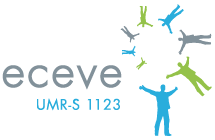Characteristics and Popularity of Videos of Abusive Head Trauma Prevention: Systematic Appraisal
Résumé
Background Numerous strategies for preventing abusive head trauma (AHT) have been proposed, but controlled studies failed to demonstrate their effectiveness. Digital tools may improve the effectiveness of AHT prevention strategies by reaching a large proportion of the adult population. Objective This study aimed to describe the characteristics of videos of AHT prevention published on the internet, including their quality content, and to study their association with popularity. Methods From a systematic appraisal performed in June 2023, we identified videos addressing the primary prevention of AHT in children younger than 2 years that were published in English or French on the internet by public organizations or mainstream associations. We analyzed the characteristics of the videos; their quality with the Global Quality Scale (GQS); and their association with an index of popularity, the Video Power Index, using multivariable quasi-Poisson modeling. Results We included 53 (6.6%) of the 804 videos identified. Videos were mainly published by public organizations (43/53, 81%). The median time spent on the web was 6 (IQR 3-9) years, the median length was 202 (IQR 94-333) seconds, and the median GQS score was 4 (IQR 3-4). Infants were often depicted (42/53, 79%), including while crying (35/53, 66%) and being shaken (21/53, 40%). The characterization of shaking as an abuse and its legal consequences were cited in 47% (25/53) and 4% (2/53) of videos, respectively. The main prevention strategies in the videos were to raise awareness of the noxious outcome of shaking (49/53, 93%) and convince viewers of the effectiveness of coping strategies for infants’ cries (45/53, 85%). The Video Power Index was positively correlated with the GQS (r=0.38; P=.007) and was independently associated with depicting an infant being shaken (P=.03; β=1.74, 95% CI 1.06-2.85) and the use of text or headers (P=.04; β=2.15, 95% CI 1.08-4.26). Conclusions AHT prevention videos had high quality but did not frequently deal with parental risk factors. The characteristics identified as being associated with the popularity of AHT prevention videos could help improve the impact of future prevention programs by enhancing their popularity.
Mots clés
abusive head trauma
shaken baby syndrome
child physical abuse
abusive head trauma child physical abuse shaken baby syndrome SBS primary prevention web-based videos digital tools head trauma prevention video internet infant mortality morbidity parent caregivers communication
abusive head trauma
SBS
primary prevention
web-based videos
digital tools
head trauma
prevention
video
internet
infant
mortality
morbidity
parent
caregivers
communication
Domaines
Santé publique et épidémiologie| Origine | Fichiers éditeurs autorisés sur une archive ouverte |
|---|---|
| licence |


